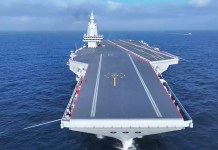China’s space ambitions got a massive upgrade after it may have conducted a “historic” satellite refuelling more than 35,000 kilometres above Earth. With this, China could finally be on its way to becoming the world’s top space power.
On July 2, 2025, two Chinese satellites—Shijian 21 and Shijian 25—docked together in geosynchronous orbit (in which a satellite’s orbital period matches the pace of the Earth’s rotation) for the first high-altitude satellite-to-satellite refueling attempt, according to several reports, including in the Hong Kong-based South China Morning Post.
This feat would allow China to extend the lifespans of its satellites and enhance space sustainability.
No other nation, not even the US or Russia, has accomplished this significant space milestone. This demonstrates the significant progress made by the Chinese Space Program, despite its relatively new status as a space power.
A US-based space situational awareness software provider, COMSPO, documented the developments that led up to the refueling process.
According to a post on X on July 11, China’s Shijian-21 and Shijian-25 “appeared visually merged in optical sensor data” between July 2 and July 6. “SHIJIAN‑21 (SJ-21) and SHIJIAN‑25 (SJ-25) were observed conducting Rendezvous and Proximity Operations (RPO) in geosynchronous orbit during June-July 2025 with multiple close approaches. The two objects appeared visually merged in optical sensor data between 2-6 Jul. Given the prolonged RPO time, SJ-21 and SJ-25 may have docked,” the post read.
UPDATE: SHIJIAN‑21 & SHIJIAN‑25 Proximity Operations in GEO
SHIJIAN‑21 (SJ-21) and SHIJIAN‑25 (SJ-25) were observed conducting Rendezvous and Proximity Operations (RPO) in geosynchronous orbit during Jun-Jul 2025 with multiple close approaches.
The two objects appeared visually… https://t.co/Mgtv0vnwgI pic.twitter.com/n9UtA2dMO1
— COMSPOC_OPS (@COMSPOC_OPS) July 11, 2025
It further stated that in June and July, the two probes were seen doing such operations in geosynchronous orbit “with multiple close approaches.”
For instance, the Shijian-25 conducted a “steady drift towards” Shijian-21 on June 11, marking the first near encounter. Later, on June 13, the two approached within 1 km (0.6 miles) of each other before splitting up 90 minutes later, according to COMSPOC.
At the time, the Chinese satellites were flanked by the US surveillance satellites USA 270 and USA 271, which were positioned for the best observation angles, the company stated.
Separately, the Swiss space surveillance company S2A Systems provided optical tracking photos showing that the Chinese satellites, both of which were in orbit at a height of 35,786 kilometers (22,236 miles) above the equator, conducted another round of close-proximity activities on June 30. It stated that the two had been closing in on one another for days before they finally came within very close range.
The Shinjian-25 has been developed by the Shanghai Academy of Spaceflight Technology (SAST). It was launched on January 6, 2025, from the Xichang Satellite Launch Center using a Long March 3B rocket for “satellite fuel replenishment and life extension service technology verification,” according to a SAST statement.
Meanwhile, Shijian-21 was launched into orbit in October 2021 with the primary goal of “testing and verifying space debris mitigation technologies.” In January 2022, it hauled a defunct BeiDou navigation satellite into a higher “graveyard” orbit, thereby using up most of its fuel. This made the Shinjian-21 the perfect asset for the refuelling mission.
The mission was intended to test technology for satellite life extension and on-orbit refuelling. China aims to extend the lifespan of existing satellites and reduce the cost of launching new ones by refueling them in geosynchronous orbit (GEO), which is approximately 35,786 kilometers or 22,236 miles above Earth.
The mission is managed by the People’s Liberation Army Strategic Support Force and the China National Space Administration (CNSA), and is a component of China’s larger space program.
As of now, the satellites remain docked. Chinese space officials have yet to confirm the refueling mission, with several observers predicting that confirmation will likely come only after the satellites separate from one another and the SJ-21 makes some notable maneuvers, indicating that the refueling has been successful.
The mission, if successful, is an extraordinary feat due to the challenges involved. As noted by SCMP, high-orbit satellite-to-satellite refueling poses unique technical hurdles, including the requirement for accurate docking and fuel transfer between uncrewed spacecraft in microgravity. Beijing has made reducing space junk and refueling a top priority.
The success in this mission could lead China to develop a network of orbital refueling stations, transforming satellite operations.
The US Is Wary Of China’s Space Ambitions
The refueling mission is already being viewed with concern and skepticism. Observers in the US believe that Beijing’s refuelling experiment is likely to have a dual-use application.
Experts have noted that refuelling satellites could enhance China’s military satellite capabilities by enabling longer reconnaissance missions. Additionally, the technology could be employed in anti-satellite warfare to disrupt probes that are essential for command, control, and communications; location, navigation, and timing; missile early warning, and other crucial military operations.
“China is very good at dual-use,” said Robert Hall, director of special projects at COMSPOC. “Naturally, DoD sees this, and it makes the hairs on the back of people’s necks stand up.”
On its part, the US has also been actively pursuing in-space refueling technologies to extend satellite lifespans, enhance maneuverability, and support sustainable space operations.
In 2007, the Defense Advanced Research Projects Agency (DARPA) conducted a mission called ‘Orbital Express’ in low Earth orbit (LEO) to demonstrate autonomous refueling and servicing. At the time, two satellites, ASTRO and NEXTSat, performed hydrazine refueling and battery replacement, showcasing autonomous rendezvous and docking capabilities.
However, a similar feat remains elusive in the GEO.
The US reportedly trails in that area due to the lack of urgency and priority accorded to a comparable US program. Although the US Space Force has provided funding for a few on-orbit refuelling (mostly commercial) experiments, none of them have yet been completed, and top service officials have stated that they do not have any plans to engage in such operations anytime soon.
Earlier, Breaking Defense reported that the Pentagon’s fiscal 2026 research and development budget documents reveal that the Space Force request only includes $14.5 million for Space Access, Mobility & Logistics, the mission area that includes on-orbit refueling as well as other types of missions involving RPO and rapid maneuver. This is nearly a 50% reduction from the already scant FY25 budget of $24 million.
The in-orbit refueling would essentially enhance the US’s resilience against adversaries like China and Russia, which have demonstrated anti-satellite capabilities. The ability to refuel would extend mission flexibility and reduce replacement costs.
Several commercial refueling missions, including Tetra-5 and Tetra-6, are planned for 2026 and 2027, respectively. Both these missions are still in the demonstration phase.
This means that even if the two missions are successful, the US would still be playing catch-up in this space race.
- Contact the author at sakshi.tiwari9555(at)gmail.com
- Follow EurAsian Times on Google News




